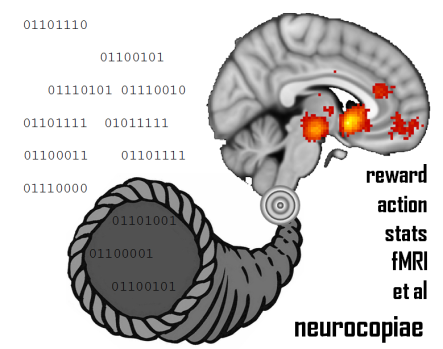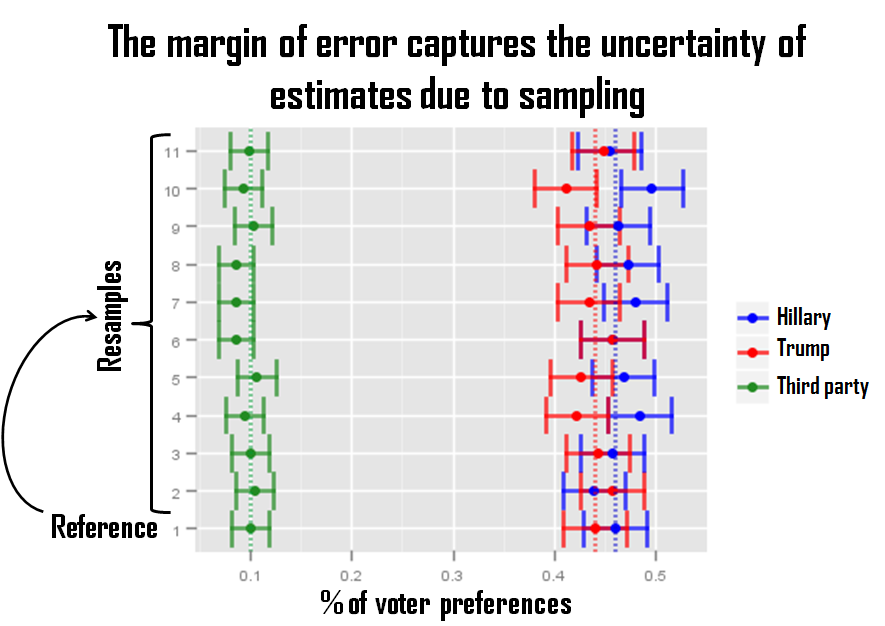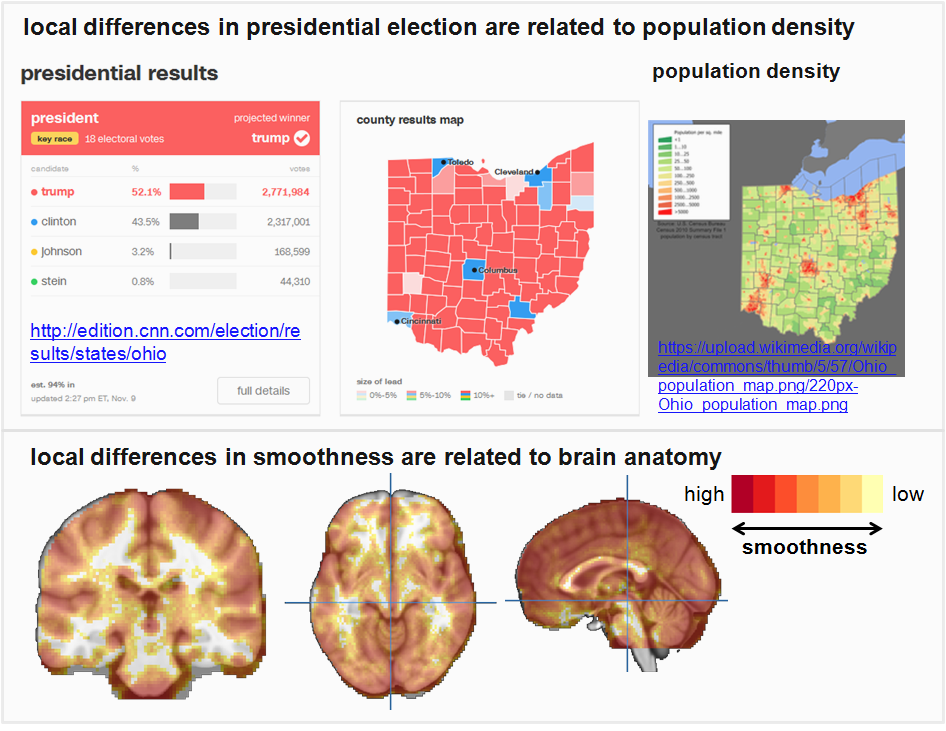One more week has passed since I posted the first part of my take on the presidential upset in the US elections. First of all, I want to say that I was pleasantly surprised to see that it received good attention and was picked by the editors of scienceseeker.org (thanks!). Once you wake up on the wrong side of the error bar, you start to wonder if there is any chance to do better next time. What worked in Trump’s favor, has also led to erroneous estimations of brain activation clusters in fMRI research. Correlated errors are omnipresent in data, but hardly present in statistical models regardless of the domain and I covered this aspect in Part 1. In the second part of my post, I will deal with two more statistical issues that surfaced after the election, but are not echoed in common practice data handling in neuroscience: 1) misconceptions about what the margin of error truly reflects and 2) the gap between a sample (what you got) and the underlying population (what you want to get at). Continue reading “When the margin of error is decisive: Trump’s victory as a lesson for neuroscience, part 2”
When the margin of error is decisive: Trump’s victory as a lesson for neuroscience, part 2
Many things may go wrong, but we can count on the standard error to be on the safe side, can’t we? Neurocopiae digs into the data to unearth common sources of error that are not “standard” errors.



